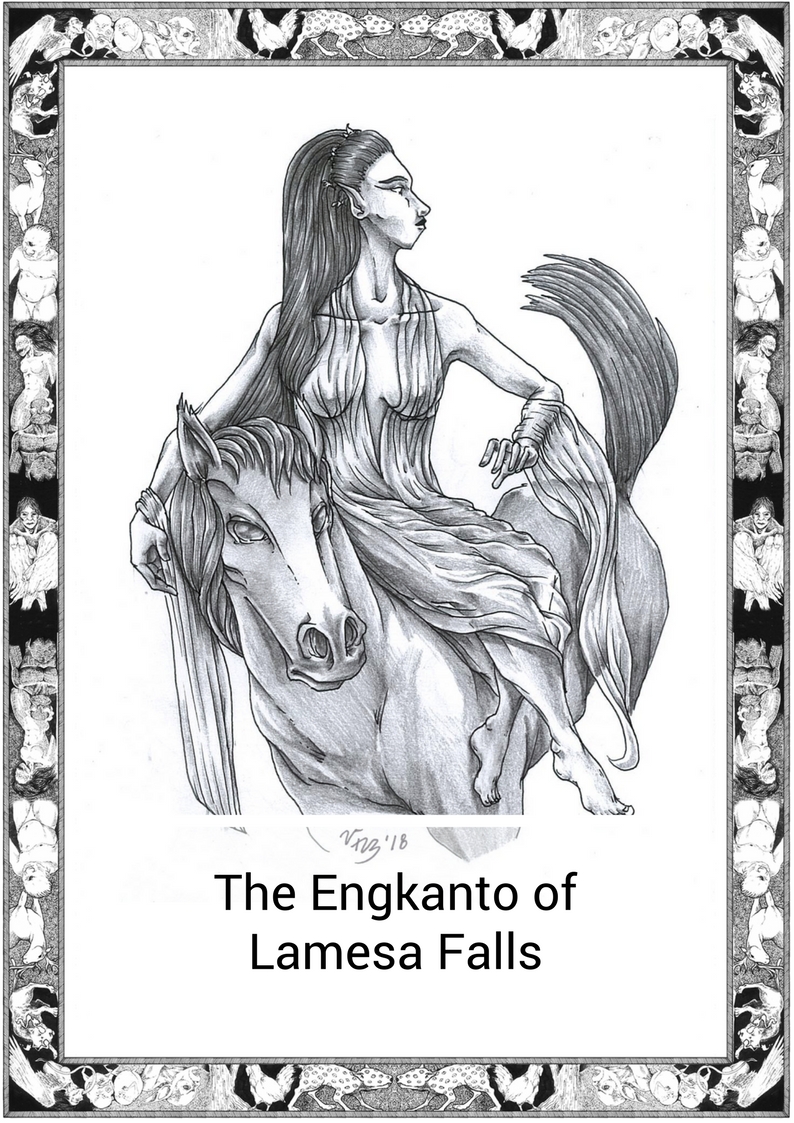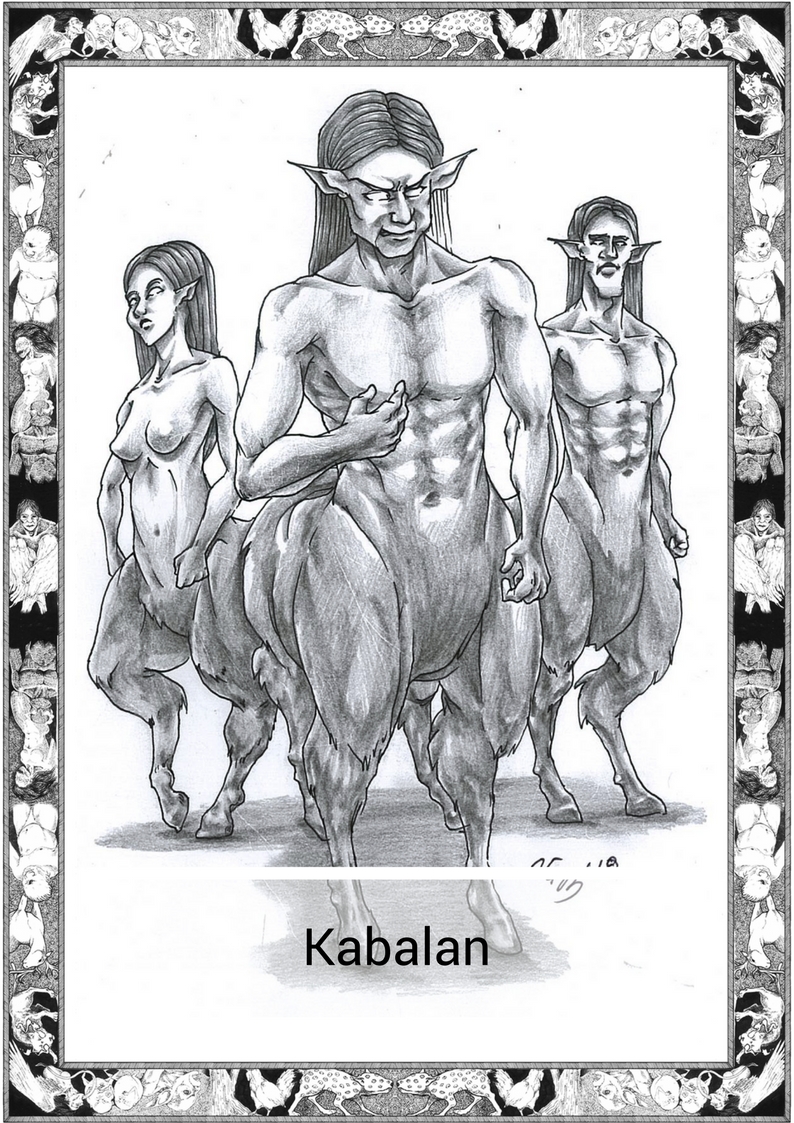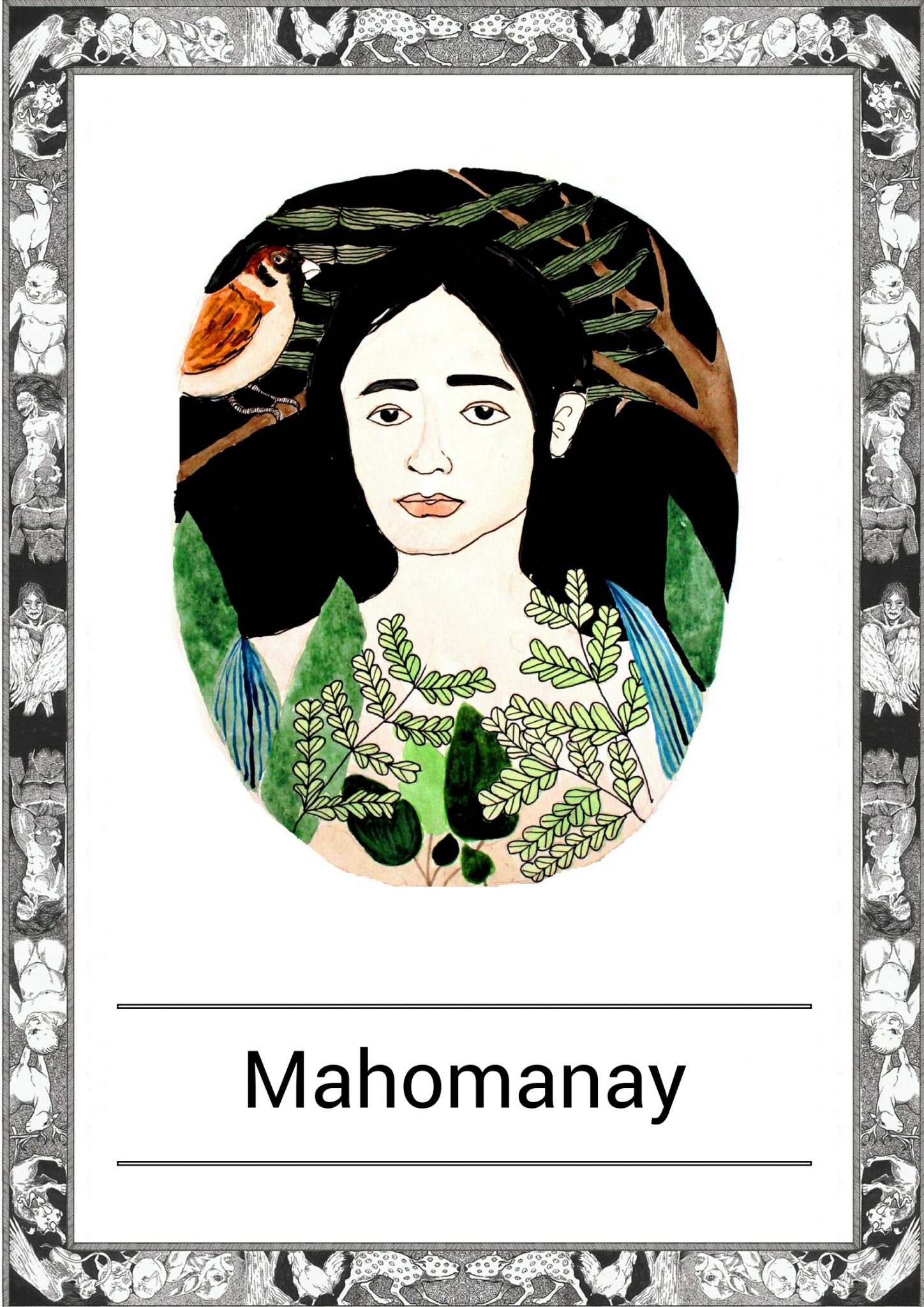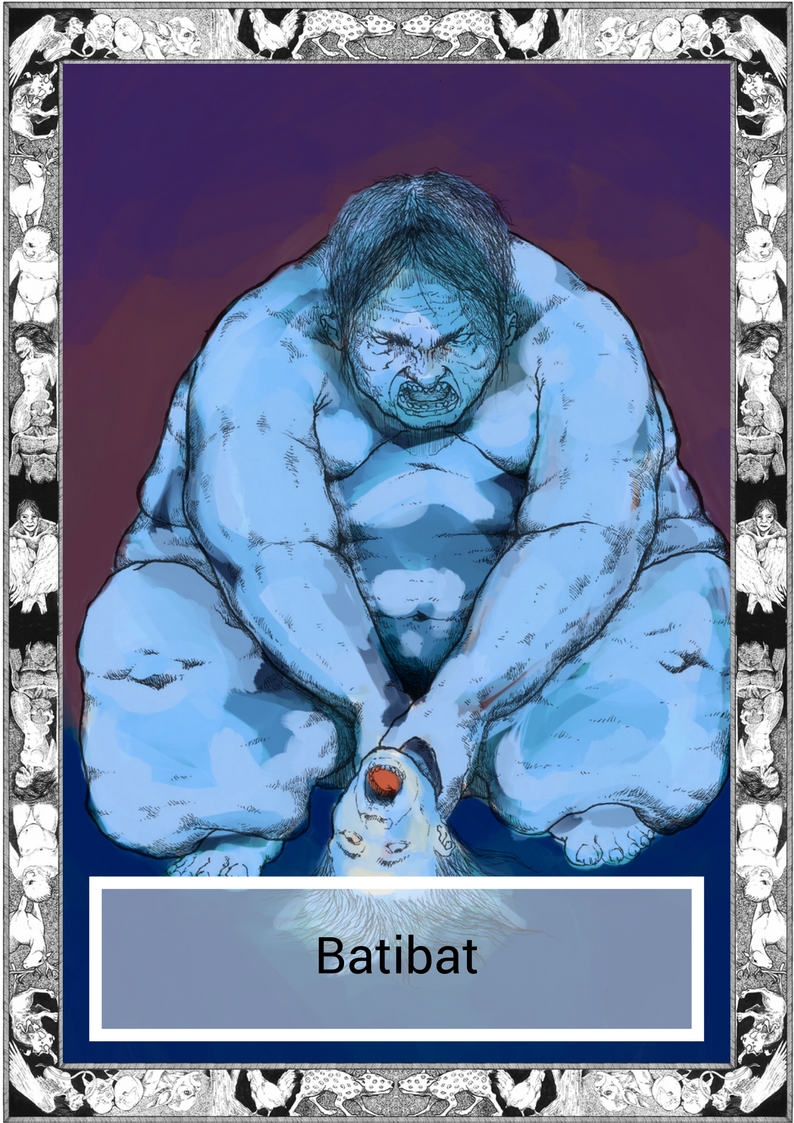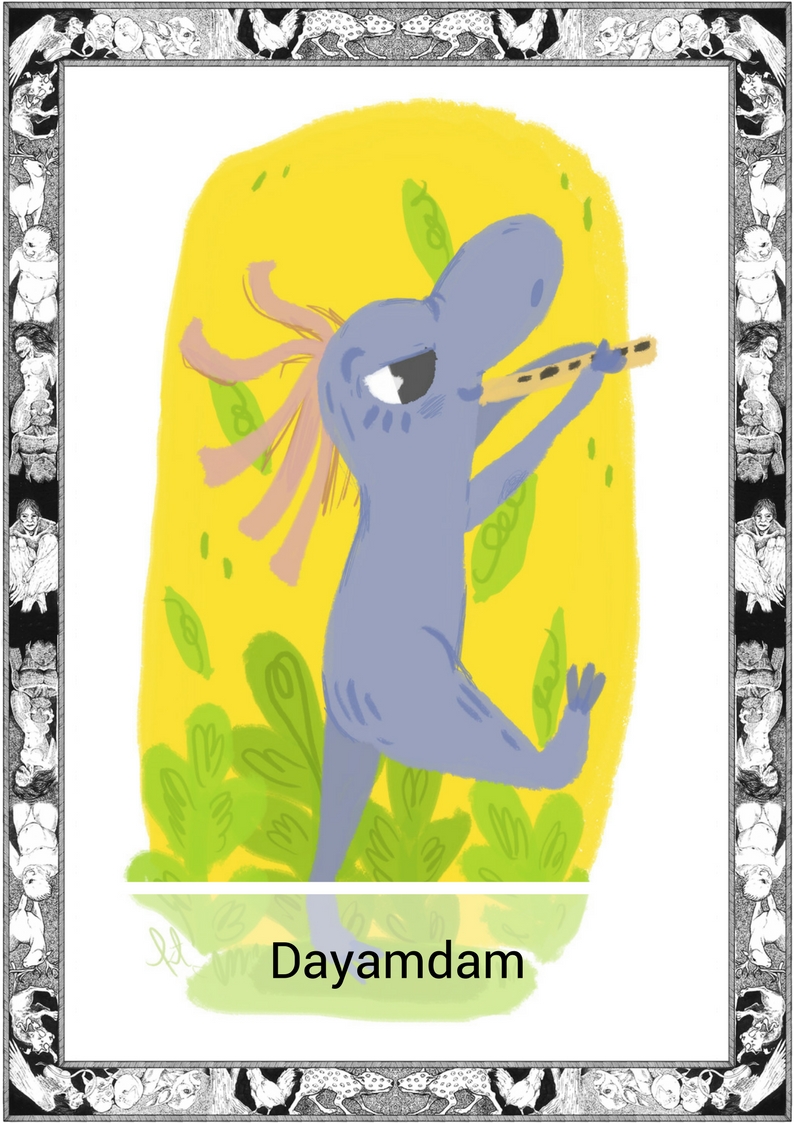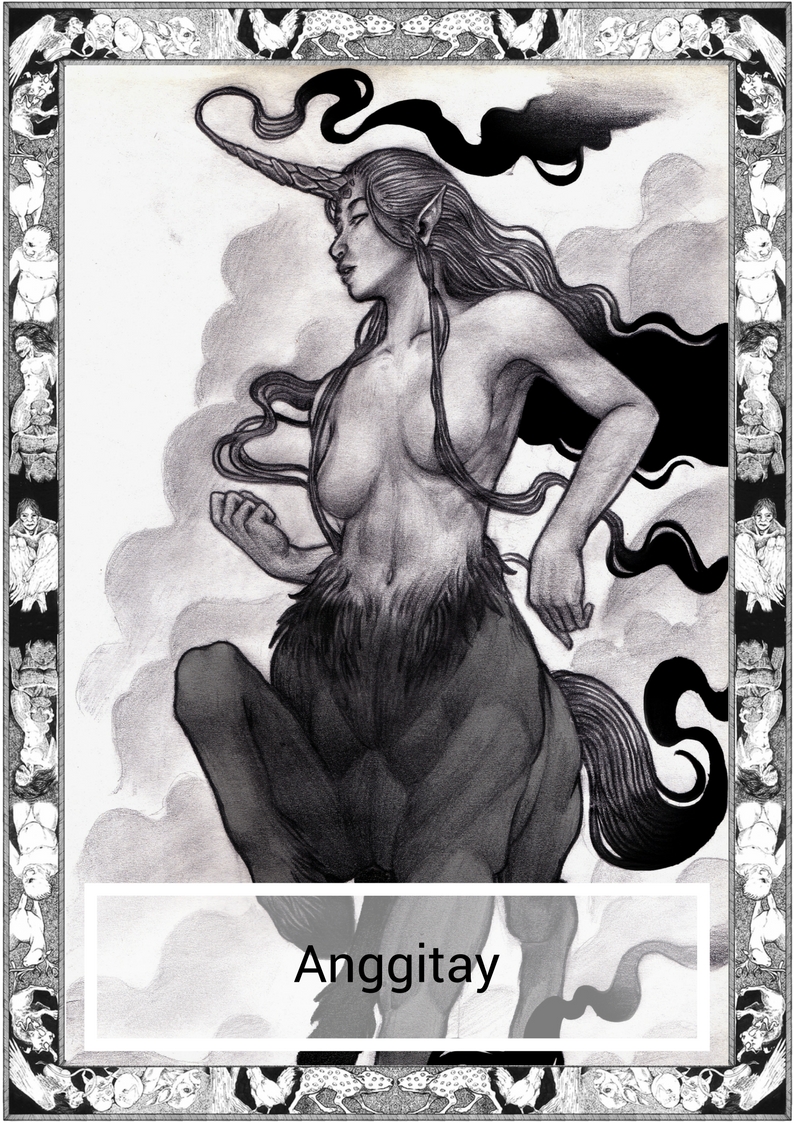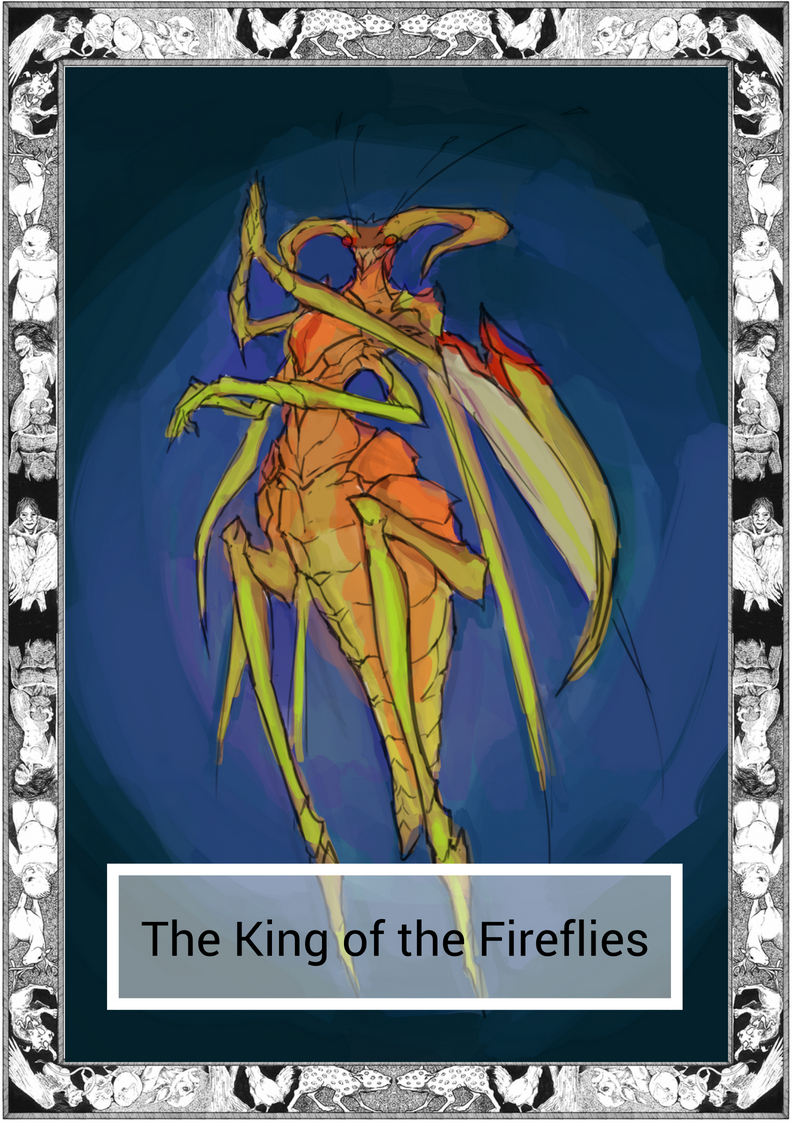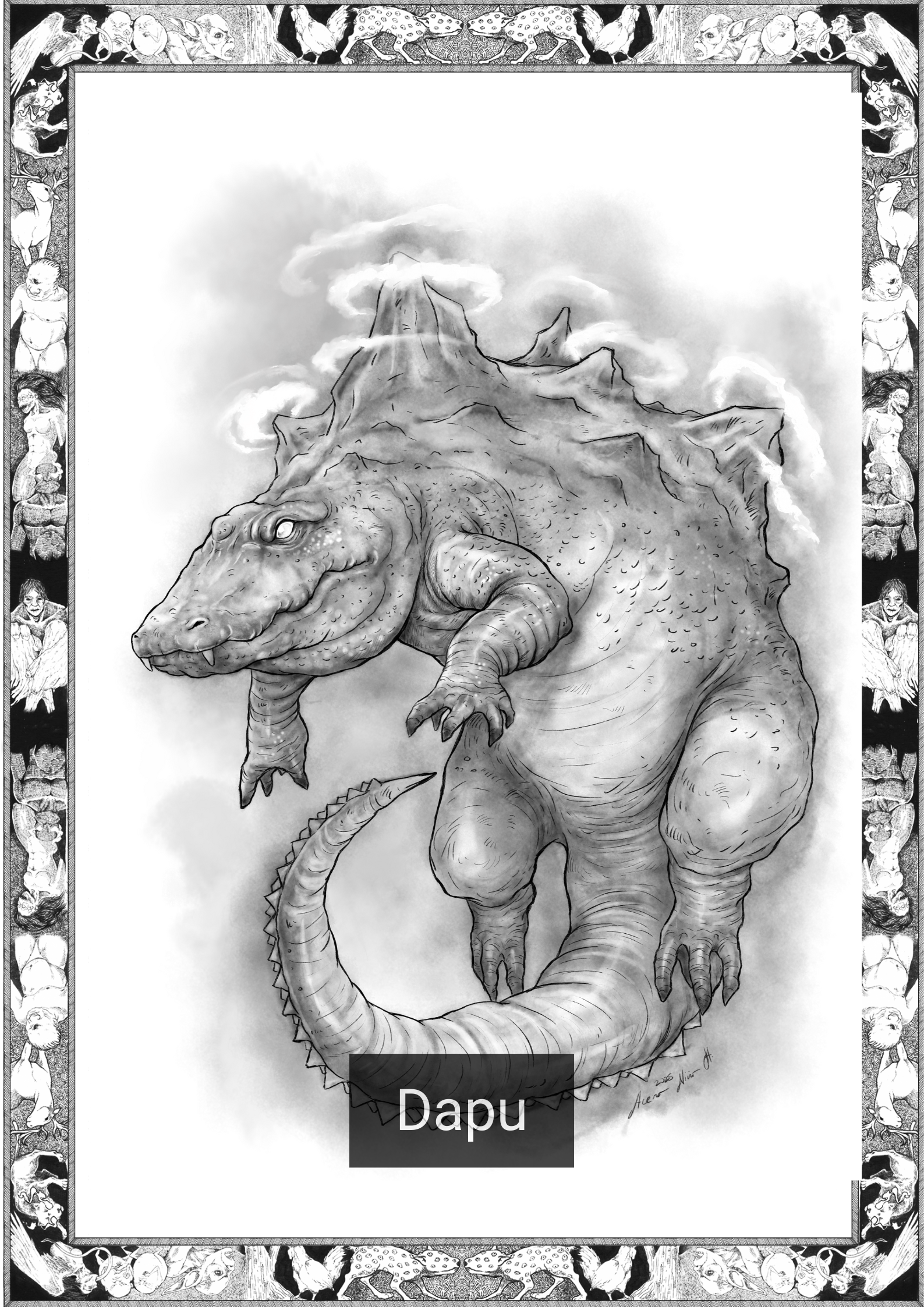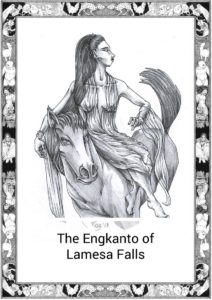
*Note this is in Marinduque Tagalog
Isang amakapangkaraniwang araw laang mandin yuon nu’ng nagkasakit si lola at siyang hindi man makapar’on sa kala’an para mamuti. Si ining na amakawalong taong gulang pa, isa sa kabunsuan ay kundi nagpasyang sumama sa kanyang tiyuhin at atihin para gumulapay sa matatarik at padahilig na hayhayin, na kanilang agaputihan.
Maigi bayang malaog si ining, ngani laang at iri’y gawa nang kanyang gampanin. Pay ang kanyang tatayin at kuyahin ay pumanaw na, alam niyang amakaisa na siyang nagaasikaso kay nanay niya. Gayunpaman, hindi man iri naging hadlang sa kanyang pagiging masaliksikin at palalaugin.
Inagaunan siyang “tomboy” ng kanyang mga karatigan. Bukod siyang magi-os sa iba niyang kapwa babae. Habang ang iba’y nanganganlaro ng manika at bahay-bahayan, siya’y kundi nayon sa busay at nagasusugbo, minsa’y nangangalaan mag-isa, at nagahamon pa nganing patagisan ng kakayahan at sayawan sa mga kalalakihan.
Ngay-on, kinailangan niyang magbanat para sa kanyang pamilya. Bumagsak ang malakas na ulan sa sulirap ng kanilang dampa (payag), siya kang iring si ining na kasama ang kanyang atihin at tiyuhin ay kundi kanghihintay nang malaon. Mahapon na nuon nang humulaw ang ulan, didaling nangalakyat muli ang tatlo patagudtud. dangan nang masagintawan pa ang huling liwanag ng salimsim.
Nakayari na sila sa kanilang putihin nang ang buwan ay nagtuig, at ang tatlo ngani’y nagpasyang lumusong sa nagaragasang ilog malapit sa paanan ng bundok nuong gabi ring yuon. Nagpalipas na laang sila ng magdamag sa dampa nang bigla na lang silang napadpad sa malapanaginip na lupain.
Nuon ay hanggang sa may pumukaw kay ining. Bukod na tunog ang kanyang naririnig mula sa labas ng dampa. Akala niya’y ampay panibagong bugsok na naman wari iri ng ulan, ngunit ya’ng hawan naman ng panganurin nang kanya iring maaninaw. Katanto pa niya na ang tunog na kanyang naririnig ay kundi nanggagaling sa laguslos ng mga dahon at sangang nagamula sa kala’an.
“Makawala manding taong naninirahan dini!” nagaon siya sa kanyang sarili. Nanaig ang palaisipan kay ining. Nanaig ang kanyang paghuna at siya niyang sinundan iring himig patungo sa ulungan ng busay ng Lamesa. Nagaon daw na iri nganing busay ay inagaliklikan ng mga bukod na nilalang. Inapakaisip pa ngani ni ining na ang kwentong yuon ay sabi-sabi lamang, ngunit ngayon, siya na’y nabibilingan.
Sa inagaong busay, mayroon daw iring malapad na bato sa libtong, na kung saan dini pala hinalaw ang dangain. Nawala iri at kundi sa inakatayuan ay napaltan iri ng kahawanang may naggagandahang suot ng kalalakihan, kababaihan, kabataan at durong kakakabayo. Gulping samok na awitin ang napalibot sa mga taong nangangangpakinig sa himig niri. Nayon din ang punsyunang makapuno ng pagkain at inumin, siyang nakapabighaning maigi kay ining, sura nang nalimutang siya’y nasa kala’an pa rin.
Makahindi malilimutan ni ining ang karanasang yuon, pay siya ang kaigihang sagintawin na humambiyad sa kanyang paningin. Ang malulumoy na kutis, katangusang ilong, at malalamlam na mata ang naalimbukad sa kanyang isip bagay kanyang aalalahanin.
Inapangtanghuran niya iri hanggang sa pagkakataong siya ay mabalik na sa kanilang dampa. Pinakalihim niya iri alang-alang sa mga masunod niyang apugan na kanyang aistorya patungkol sa mga engkantong naninirahan sa busay ng Lamesa.
=———————————————————=
English Version
It was a day just like any other when lola got sick and could not go up the mountain to harvest crops. One of the youngest, a girl of eight volunteered to go with her uncle and eldest sister up the steep trek to the slopes where they gathered crops.
The girl had a soul for adventure, but that was tempered by filial duty. Her father and eldest brother had passed on and at that young age she knew that she had to assist her mother. That didn’t stop her curiosity or her love of exploration.
The villagers called her a tomboy. She behaved unlike the other girls her age. While they were preoccupied with dolls and playing “bahay bahayan” the girl would jump headfirst into deep streams, hike the mountains alone and challenge the boys to games of skill and chance.
Today she had to do her duty for her family. The hard rains struck the roof of their payag (nipa hut) and the girl and her older sister and uncle were waiting for hours. It was late in the afternoon when the clouds broke and the three rushed to their plots high up in the mountains, they did not want to let the last lights of the day slip away.
The harvest was finished when the moon was bright in the sky and the three agreed that it would be too dangerous to cross the river at the foot of the mountain at night. They decided to spend the night in the payag and the three drifted into the land of dreams.
That is, until something awoke the little girl. It was a strange sound coming from outside the payag. She thought it might be the rain coming back for another shower, but the night sky was dry. She realized that the sweet sound was music making its way through the leaves and branches of the forest.
“There aren’t any people that live here!” She thought to herself. Curiosity overtook the young girl and she followed the music to the banks of Lamesa falls. There were stories that the falls were the home of enchanted beings. The girl used to think that those stories were just make believe, but now she wasn’t so sure.
In the waterfall there was a flat rock at the bottom from where the falls derived there name. It was gone then and in its place was a dry plaza filled with expensively dressed men, women, children and horses. Music was thick in the air and the people were moving to the sweet sounds. There was a banquet filled with food and the whole scene enthralled the girl so much that she forgot she was in a forest.
The girl would never forget that night, for it was the most beautiful sight that she had ever seen. Their fair skin, aquiline noses and expressive eyes would flash into her mind whenever she thought of beauty.
She watched them until it was time for her to return to the payag and kept their secrets to herself until sometime in the far future when she would tell her own children about the engkanto that lived in the forest along bodies of water.
————————–
*The version of Tagalog spoken in Marinduque, known as the Marinduque Tagalog, has been described as “the root from which modern national forms of speech have sprung,” where remnants of archaic Tagalog could be found, spoken in a lilting manner by its inhabitants.
Written by Karl Gaverza
Translation by Kahlil Phillip Murillo
Copyright © Karl Gaverza
Translation Copyright © Kahlil Phillip Murillo
Adapted from a Story told by Grace Collantes
The Engkanto of Lamesa Falls Illustration by Ysa Peñas
Instagram: https://www.instagram.com/
Vocabularies Used (For Reference)
- Kala’an (n.) – woods, forest, pusod ng kagubatan, kakahuyan
- Gulapay (v.) – to trek
- Dahilig (adj.) – steep
- Hayhay (n.) – way, path, landas
- Laog – to go adventure, gumala
- Pay – because
- Karatig – neighbor
- Gi-os – galaw, kilos, movement, liksi
- Busay – waterfalls, falls
- Sugbo – to dive
- Sulirap – nipa leaves
- Dampa – (payag)
- Hulaw – tila ng ulan
- Tagudtud – mountain, mountain range, hill, mountainous area
- Dangan – to hope
- Sagintaw – silayan
- Salimsim – dusk
- Tuig – supernatural phenomena, full moon phenomena
- Bukod – different
- Ampay – like as, as if
- Bugsok – buhos ng ulan
- Hawan – spacious
- Panganurin – clouds
- Laguslos – chime
- Huna – hypothesis
- Ulong – base of waterfalls
- Liklik – pugad, headquarters
- Biling – confused
- Libtong – deep part of any water forms
- Danga – bansag, nickname
- Samok – noise
- Hambiyad – tambad, center of attention
- Lumoy – smooth
- Alimbukad – springforth
- Apugan – grandchildren, next generations
